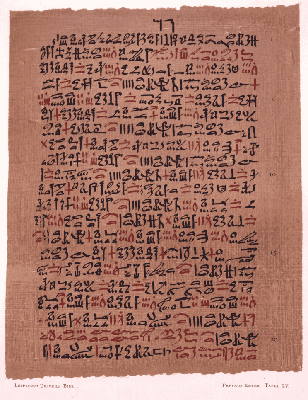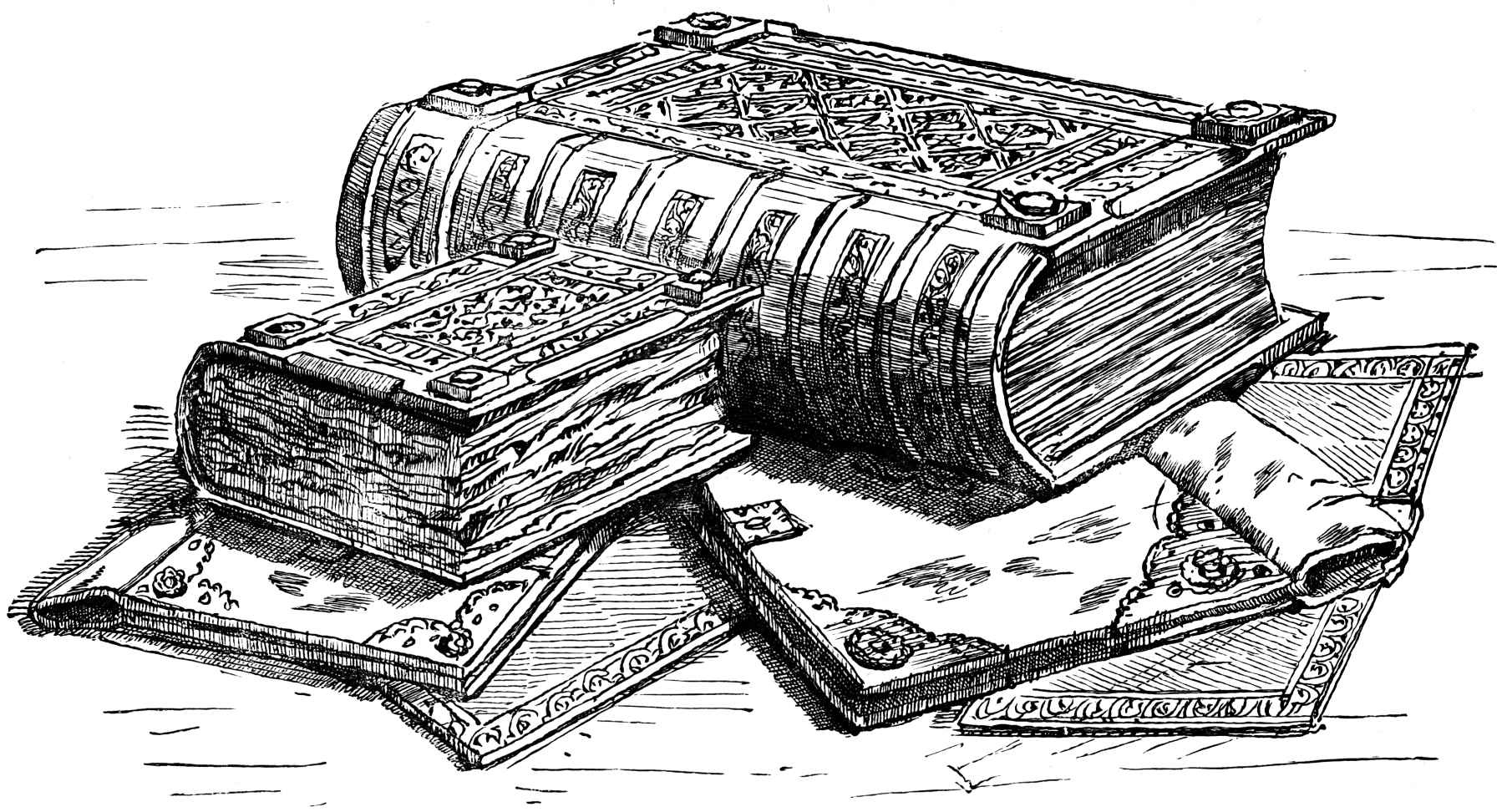| |
|
|
|
| |
|
|
| |

Modern papyrus finds from an
ancient garbage dump of the provincial city of Oxyrhynchus, dated to the time between 75-125 AD
Then one of the oldest representations of Euclid's Elements.

The Ebers Papyrus, also known as
Papyrus Ebers, is an Egyptian medical papyrus
dating to circa 1550 BC. Among the
oldest and most important medical
papyri of ancient Egypt,
it was purchased at Luxor,
(Thebes) in the winter of 1873–74 by Georg Ebers.
It is currently kept at the library of the
University of Leipzig, in Germany.

Beautiful modern papyri papyrus (excerpt) -
illustrated and inscribed with hieroglyphic texts
and scenes from the Egyptian Underworld.
Not all the papyri were designed so intricately
and colorfully illustrated here as this excerpt shows,
depending on the purpose of the papyri.

The Golden Book (caricature in 18th century)
In this book all the gods and their
deeds are shown and described.
It is not clear whether such a powerful book
that really exists, or has existed,
even just one side of it would apply
as a fund ind as a breakthrough of archeology,
because we know very little about
the early people. In a foreign way,
the thinking of Babalogie this book is an 'Artefact.
The book was supposed to be so
heavy that it could not be carried or moved there as a place.
Often though it was near Mesopotania
The study of ancient Mesopotamian
architecture is based on available evidence,
pictorial representation of buildings,
and texts on building practices.
Scholarly literature usually concentrates
on temples, palaces, city walls and gates,
and other monumental buildings,
but occasionally one finds works on
residential architecture as well.
Archaeological surface surveys also
allowed for the study of urban
form in early Mesopotamian cities.
The most notable architectural remains
from early Mesopotamia are the temple
complexes. Houses are mostly known
from Old Babylonian remains at Nippur and Ur.
Among the textual sources on
building construction and associated
rituals are Gudea's cylinders from the l
ate 3rd millennium are notable, as well
as the Assyrian and Babylonian royal
inscriptions from the Iron Age.

A portion of the papyrus of Ani from the Egyptian
new kingdom, around 1200 BC. This is the most
elaborate of the surviving Egyptian "Books of the Dead,"
which were a collection of spells to enhance the
well-being of the deceased with whom the papyrus was buried.
Courtesy Barry Powell, University of Wisconsin-Madison.

Having reached a somber note,
let's conclude our examination of the
roots of writing with this Egyptian inscription,
a Jeremiad before its time:
The land falls apart, has become a wasteland to me;
Made as the [desert].
Truth has been cast aside,
and evil placed within the council;
the gods' plans are disturbed and neglected,
The land is in distress.

Is vouched for example by the
ancient Egyptians, this is particularly true
that at the beginning of a new year did.
Could they still hope that a
new life cycle in nature,
the individual was a chance for a fresh start,
avoiding negative experiences of the past.
As a symbol of new life gave you scarabs
and New Year as well as small bottles,
homemade spells on papyrus.
Our European ancestors had similar customs,
at any rate it was in the late Middle Ages
and the early modern period is often the case,
visit at New Year's Day, in order to wish
each other luck for the future.
|
|
| |
|
|
|
|
|
|
|
|